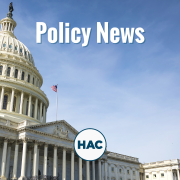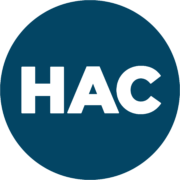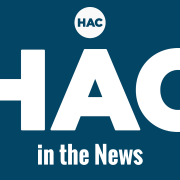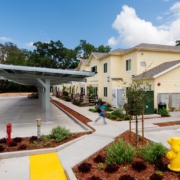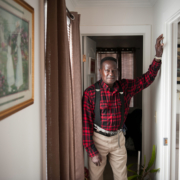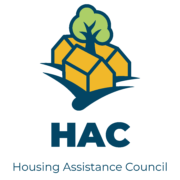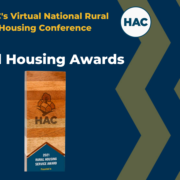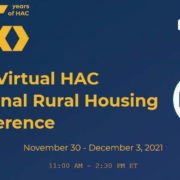HUD Spending Bill Creates New Manufactured Housing Program and Emphasizes New Construction
Final fiscal year 2023 funding levels for most HUD programs remain steady or receive slight increases in the omnibus spending bill congressional leaders released on December 20, 2022, which is expected to be enacted later this week. The measure also shifts some funds around in small programs that are important to rural areas, and creates new efforts to improve manufactured homes and to increase the supply of affordable housing.
— HAC’s analysis of appropriations for USDA’s rural housing programs for FY23 is available here. —
Rural Considerations
The explanatory statement that accompanies the bill “urges the Department to enhance its efforts to provide decent, affordable housing and to promote economic development for Americans living in rural areas. When designing programs and making funding decisions, the Department shall take into consideration the unique conditions, challenges, and scale of rural areas.”
Among the bill’s provisions, the Self-Help Homeownership Opportunity Program (SHOP) receives a small increase from $12.5 million in FY22 to $13.5 million in FY23. Similarly, the Rural Capacity Building (RCB) program inches up from $5 million last year to $6 million for the current year. The Veterans Housing Rehabilitation and Modification Pilot Program, however, which is funded in the same account as SHOP and RCB, drops to $1 million from its $4 million in FY22.
The bill doubles the Healthy Homes funding for home modifications and renovations to help low-income elderly homeowners remain in their homes. In FY22 this effort received $15 million, of which $5 million was set aside for rural areas. In FY23 the total is $30 million, with a $10 million rural setaside.
Manufactured Housing
A new Preservation and Reinvestment Initiative for Community Enhancement (PRICE) will receive $225 million to preserve and revitalize manufactured housing. The funds will be distributed over five years as competitive grants to states, local governments, resident-owned manufactured housing communities, cooperatives, nonprofits, community development financial institutions, Tribes, and other entities designated by HUD. Grantees must provide a 50 percent match for the federal funds.
These grants can be used for homes that are not in manufactured housing communities, or in manufactured housing communities that are owned by resident-controlled entities or are legally required to remain affordable for the long term. Eligible uses of funds include infrastructure, planning, resident and community services (including relocation assistance and eviction prevention), resiliency activities (defined as reconstruction, repair, or replacement to protect the health and safety of manufactured housing residents and to address weatherization and energy efficiency needs), and assistance for land and site acquisition. The funds can be used to replace pre-1976 mobile homes, but not to repair them. HUD must prioritize applications that primarily benefit low- or moderately low-income residents and preserve long-term housing affordability for residents of manufactured housing or a manufactured housing community.
Within the $225 million total, $25 million is set aside for a pilot program to provide grants to assist in the redevelopment of manufactured housing communities as affordable replacement housing. Eligible activities include relocation assistance or buy-outs for residents of a manufactured housing community or downpayment assistance for the residents.
New Construction
The bill establishes two new efforts to increase the supply of affordable housing. First, it provides $75 million under the Continuum of Care program for new construction, acquisition, or rehabilitation of new permanent supportive housing.
Second, it creates a new grant program – dubbed a “Yes In My Back Yard” program in the explanatory statement – to incentivize affordable housing production. HUD will receive $85 million for competitive grants to state and local governments, metropolitan planning organizations, and multijurisdictional entities to identify and remove barriers to affordable housing production and preservation.
Smoke Alarms
The bill imposes a new requirement for smoke alarms in units assisted by the public housing, Tenant-Based Rental Assistance, Project-Based Rental Assistance, Section 202, Section 811, and Housing Opportunities for Persons with AIDS programs. The same mandate is added for the USDA Section 515 and 514/516 rental programs. The requirement will take effect in December 2024.
The table below shows the dollar amounts provided for HUD programs in regular appropriations. A different title in the bill provides additional amounts to be used for disaster relief; for HUD, these are $2.66 billion for Tenant-Based Rental Assistance, $969,000 for Project-Based Rental Assistance, and $3 billion for CDBG Disaster Relief.
| HUD Program (dollars in millions) | FY22 Final Approp. | FY23 Admin. Budget | FY23 House Bill | FY23 Senate Bill | FY23 Final |
| CDBG | $3,300* | $3,770 | $3,300 | $3,525 | $3,300 |
| HOME | 1,500 | 1,950 | 1,675 | 1,725 | 1,500 |
| Self-Help Homeownshp. (SHOP) | 12.5 | 10 | 12.5 | 17 | 13.5 |
| Veterans Home Rehab | 4 | 4 | 0 | 4 | 1 |
| Tenant-Based Rental Asstnce. | 27,370 | 32,130 | 31,043 | 30,182 | 27,600 |
| VASH setaside | 50 | 0 | 50 | 85 | 50 |
| Tribal VASH | 5 | 5 | 5 | 5 | 7.5 |
| Project-Based Rental Asstnce. | 13,940 | 15,000 | 14,940 | 14,687 | 13,938 |
| Public Hsg. Capital Fund | 3,388 | 3,720 | 3,670 | 3,405 | 3,200 |
| Public Hsg. Operating Fund | 5,064 | 5,060 | 5,063 | 5,064 | 5,109 |
| Choice Neighbrhd. Initiative | 350 | 250 | 450 | 250 | 350 |
| Native Amer. Hsg. | 1,002 | 1,000 | 1,000 | 1,052 | 1,020 |
| Homeless Assistance Grants | 3,213 | 3,576 | 3,604 | 3,545 | 3,633 |
| Hsg. Opps. for Persons w/ AIDS | 450 | 455 | 600 | 468 | 499 |
| 202 Hsg. for Elderly | 1,033 | 966 | 1,200 | 1,033 | 1,075 |
| 811 Hsg. for Disabled | 352 | 288 | 400 | 288 | 360 |
| Fair Housing | 85 | 86 | 86 | 85 | 86 |
| Healthy Homes & Lead Haz. Cntl. | 415 | 400 | 415 | 390 | 410 |
| Housing Counseling | 57.5 | 65.9 | 70 | 63 | 57.5 |
* A substantial increase in CDBG funding for FY22 was driven nearly entirely by the return, after a 10-year absence, of $1.5 billion for the Economic Development Initiative for the purpose of funding Community Projects/Congressionally Directed Spending (popularly known as “earmarks”). In FY23, just under $3 billion is added for earmarks. These figures are not included in the table.
Senate’s HUD Funding Bill Increases SHOP, Leaves Out New Manufactured Housing Proposal
Funding increases for many Department of Housing and Urban Development (HUD) programs would be provided by a just-released Senate Appropriations Committee bill, including a raise for the Self-Help Homeownership Opportunity Program (SHOP) to $17 million from its current $12.5 million level.
— HAC’s analysis of appropriations for USDA’s rural housing programs for FY23 is available here. —
The committee’s proposal for fiscal year 2023 HUD funding does not, however, include the new $500 million Manufactured Housing Improvement and Financing Program that was adopted by the House in its HUD appropriations bill (described in more detail below). Neither the Senate bill nor its House counterpart includes the new Housing Supply Fund proposed in the administration’s budget (also described below).
The Senate bill also does not match either the House’s proposal to create 140,000 new vouchers, or the HUD budget’s proposal to add 200,000 vouchers targeted to individuals fleeing domestic violence and persons experiencing homelessness.
Some other important measures are included in the Senate committee’s bill in addition to its funding provisions. One would reauthorize the Native American Housing Assistance and Self-Determination Act (NAHASDA). Another, the Reforming Disaster Recovery Act, would permanently authorize the CDBG Disaster Recovery program and make other changes intended to get disaster recovery aid to survivors more quickly.
The Senate Appropriations Committee released the HUD funding bill on July 28 along with other appropriations bills for fiscal 2023, which begins on October 1, 2022. The fate of these proposals is unclear. The Senate has not scheduled action on any of them. The House has passed a “minibus” bill that combines appropriations measures for several agencies, including HUD and the U.S. Department of Agriculture, but the fiscal year is expected to begin with a continuing resolution holding government spending at FY22 levels. Final appropriations are not likely to be completed until after the midterm elections in early November.
| HUD Program (dollars in millions) | FY21 Final Approp. | FY22 Final Approp. | FY23 Admin. Budget | House Bill | Senate Bill |
| CDBG | $3,475 | $4,841* | $3,770 | $3,300 | $3,525 |
| HOME | 1,350 | 1,500 | 1,950 | 1,675 | 1,725 |
| Self-Help Homeownshp. (SHOP) | 10 | 12.5 | 10 | 12.5 | 17 |
| Veterans Home Rehab | 4 | 4 | 4 | 0 | 4 |
| Tenant-Based Rental Asstnce. | 25,778 | 27,370 | 32,130 | 31,043 | 30,182 |
| VASH setaside | 40 | 50 | 0 | 50 | 85 |
| Tribal VASH | 5 | 5 | 5 | 5 | 5 |
| Project-Based Rental Asstnce. | 13,465 | 13,940 | 15,000 | 14,940 | 14,687 |
| Public Hsg. Capital Fund | 2,942 | 3,388 | 3,720 | 3,670 | 3,405 |
| Public Hsg. Operating Fund | 4,864 | 5,064 | 5,060 | 5,063 | 5,064 |
| Choice Neighbrhd. Initiative | 200 | 350 | 250 | 450 | 250 |
| Native Amer. Hsg. | 825 | 1,002 | 1,000 | 1,000 | 1,052 |
| Homeless Assistance Grants | 3,000 | 3,213 | 3,576 | 3,604 | 3,545 |
| Hsg. Opps. for Persons w/ AIDS | 430 | 450 | 455 | 600 | 468 |
| 202 Hsg. for Elderly | 855 | 1,033 | 966 | 1,200 | 1,033 |
| 811 Hsg. for Disabled | 227 | 352 | 288 | 400 | 288 |
| Fair Housing | 72.6 | 85 | 86 | 86 | 85 |
| Healthy Homes & Lead Haz. Cntl. | 360 | 415 | 400 | 415 | 390 |
| Housing Counseling | 57.5 | 57.5 | 65.9 | 70 | 63 |
* The substantial increase in CDBG funding for FY22 was driven nearly entirely by the return, after a 10-year absence, of $1.5 billion for the Economic Development Initiative for the purpose of funding Community Projects/Congressionally Directed Spending (popularly known as “earmarks”).
House Passes HUD Appropriations
July 20, 2022 – The full House of Representatives passed the HUD appropriations bill as part of a “minibus” that combines several funding bills, including those for USDA and HUD. The Senate has not yet begun actions on FY23 appropriations, and a continuing resolution is expected to be needed to begin the fiscal year on October 1, 2022.
House HUD Appropriations Bill Proposes New Vouchers and New Manufactured Housing Program
The House’s draft FY23 appropriations bill for HUD would increase the department’s total funding above both the FY22 level and the amount requested in the administration’s budget. (See table below.) The House Appropriations Committee estimates the bill would fund more than 140,000 new housing vouchers targeted to individuals and families experiencing or at risk of homelessness and approximately 5,600 new units for seniors and persons with disabilities.
The House’s HUD bill would provide $500 million for a new Manufactured Housing Improvement and Financing Program to preserve and revitalize manufactured homes and their communities (including pre-1976 mobile homes). Grants would be distributed through a competition, with eligible applicants including states, local governments, Tribes, nonprofits, CDFIs, resident-owned manufactured housing communities or coops, and possibly other entities. Funds could be used for “infrastructure, planning, resident and community services (including relocation assistance and eviction prevention), resiliency activities, and providing other assistance to residents or owners of manufactured homes, which may include providing assistance for manufactured housing land and site acquisition.”
House appropriators propose to increase the total funding for HOME to $1.675 billion from FY22’s $1.5 billion and to set aside $50 million of it to provide down payment assistance for first-time, first-generation home buyers.
The SHOP program would remain at its FY22 level of $12.5 million. The bill does not include funding for the small $4 million Veterans Home Rehabilitation program.
The bill would not create the Housing Supply Fund proposed in the administration’s budget.
The House Transportation-HUD appropriations subcommittee will hold a markup on June 23 and the full House Appropriations Committee is scheduled to consider the bill on June 30.
HUD Budget Proposes New Housing Investments
The Biden Administration’s budget for fiscal year 2023 proposes substantial investments in existing Department of Housing and Urban Development (HUD) programs (details are in the table below) and new initiatives targeted to:
- Increasing affordable housing supply;
- Expanding rental assistance and increasing its impact on households experiencing homelessness and family mobility; and
- Addressing climate change.
The March 28 budget release is only the first step in the process of developing federal appropriations for the fiscal year that begins on October 1, 2022. HAC held a webinar to review the budget’s contents and what to expect over the coming months; view the slides and recording here.
Increasing Affordable Housing Supply
The budget proposes $50 billion in mandatory spending to increase and streamline affordable housing production. HUD would administer $35 billion of this total as a Housing Supply Fund, consisting of two elements:
- $25 billion in formula grants to be distributed to “State and local housing finance agencies and their partners, territories, and Tribes” to support streamlined financing tools for multifamily and single-family units, producing housing for both renters and homebuyers. The funding is intended to facilitate the production and preservation of smaller developments that struggle to obtain financing in the current housing finance system. The budget specifically notes that “many rural and midsize jurisdictions need a path to development that includes smaller building footprints to better integrate with existing communities.”
- $10 billion in grants to: 1) support state and local jurisdictions that adopt policies that remove barriers to affordable housing and development; and 2) incentivize funding of housing-related infrastructure such as environmental planning, transportation, and water/sewer infrastructure.
The remaining $15 billion in mandatory funding is to be administered by the Department of the Treasury, divided into:
- $10 billion in additional Low Income Housing Tax Credits (LIHTC); and
- $5 billion in grants to Community Development Financial Institutions to support financing for construction, acquisition, rehab and preservation of rental and homeownership housing, with an emphasis on increasing the participation of small-scale developers and contractors. The grants will seek to:
- increase the climate resiliency and energy efficiency of affordable housing;
- focus on underserved markets, including single-family, small properties (1-4 units) and small multifamily properties with fewer than 100 units;
- expand homeownership opportunities by targeting single-family properties for individuals and families with incomes up to 120 percent of the Area Median Income (AMI) and up to 150 percent of AMI in high cost areas (including acquisition and rehabilitation); and
- preserve affordable housing that is at risk of conversion to market rate.
Additional investments in existing HUD programs designed to complement the Housing Supply Fund grants include $2 billion in funding for the HOME Investment Partnerships program ($150 million above the FY 2022 enacted level), $100 million in funding for 1,100 new units in the Section 202 Supportive Housing for the Elderly Program, and 900 new units in the 811 Permanent Supportive Housing Program for Persons with Disabilities.
Rental Assistance, Homelessness, and Family Mobility
In addition to renewing all existing project-based rental assistance (PBRA) contracts and Housing Choice Vouchers (HCV) currently in use, the budget proposes $1.6 billion in funding to expand the Housing Choice Voucher program by 200,000 subsidies – the largest one-year expansion since the program’s inception – with the incremental subsidies targeting individuals fleeing domestic violence and persons experiencing homelessness. This effort to combat homelessness is coupled with a $576 million increase in the Homeless Assistance Grants account to $3 billion. The budget also includes $445 million in mobility services connected to use of HCVs in a broad range of communities.
Addressing Climate Change
In addition to the sustainability and resilience incentives in the Housing Supply Fund, the HUD budget includes:
- $300 million to increase energy efficiency and climate resilience in public housing;
- $150 million in funding for housing initiatives on Native American lands to increase energy efficiency and climate resilience and improve water conservation; and
- $250 million to rehabilitate HUD multifamily properties to be healthier, more energy efficient, and climate-resilient.

